Changing the location of your vegetable plants in your garden, from year to year, does take some planning, but the return is well worth the effort.
There're multiple reasons for rotating your crops.
First of all, you will be reducing the chance that insect pests will get a foothold in the garden.
When you rotate the crops, the bugs don’t know where to look for food and die out.
2nd, the chance of diseases also diminishes. Soil-borne diseases can kill your crops quickly and without much warning. Certain diseases only feed on certain types of plants. If you move the crop, the pest or disease has no host on which to live.
Moving a crop from one location to a new one the following year will also improve your soil's fertility and the availability of nutrients for your plants. If you keep planting the same crops in the same place, year after year, the crop is going to utilize whatever key nutrients the plant desires. This will not allow your soil to be balanced as the nutrients it uses will be leached from the soil.
Before you do anything, you need to make a list of what vegetables you’ll be growing in your garden.
Learning which vegetables belong to what family is the very first step to being able to keep your garden soil pumping out produce every year.
There are six basic vegetable families,
- Alliums: The veggies included in this family are onions, shallots, leeks, and garlic.
- Legumes: Green beans, green peas, soybeans. There're many other plants found in this family. All legumes are soil fixers, which benefit the soil by adding nitrogen back to the soil.
Brassicas: Broccoli, cauliflower, cabbage, kale, brussels sprouts, turnip greens, radishes, and collards.
These vegetables need nitrogen-rich soil and should be planted in a bed where legumes were planted the year before. - Nightshades: Tomatoes, eggplant, peppers, and potatoes.
All of these vegetables are heavy feeders and need rich soil.
They are also affected by the same diseases. - Umbellifers: Carrots, parsnips, fennel, parsley, and dill.
- Cucurbits: Zucchini and summer squash, cukes, pumpkins and winter squash, melons, and gourds.
Last year we decided to upgrade this part of our garden. We grew peas here and it was apparent that the soil needed to be amended. It was also necessary to build a better barrier to keep out the rabbits.
After turning the bed, a 12" wooden fence was constructed.
With a 12" high wall around the bed, there was plenty of space to add additional organic matter to the vegetable garden.
Generous amounts of last year's collection of decaying leaves would compliment the dirt in this bed.
You can see that decaying leaves, peat moss, organic vegetable bedding, and compost were added to the soil in this picture. In addition to the 6" of soil that was already in the bed, another 6" of organic matter was added.
Amending the soil in this fashion would allow us to rotate in crops that would not have been able to flourish otherwise.
With the bed completed, it was finally time to plant the peas.
As all gardeners know, bending over is part of the game. Over the years, knowing that age has no mercy, we have come up with ways to eliminate some of the bending over.
Making the holes in the dirt, for the hundreds of pea seeds, requires no bending over with the end of a broom.
Six weeks later it was obvious that the peas were enjoying the upgrades made to their new home.
This is a picture of the garlic bed from last year.
Since @farm-mom and I try to grow enough produce that will take us from one year to the next, we figured this past year's crop of hard neck garlic would be sufficient.
Well, that plan didn't play out too well. For the first time, last year we tried our hand at making Garlic Dill Pickles. They came out great, but you can go through some garlic making these bad boys. Before we knew it we had used almost half of our stash of garlic and realized that this year we would need to grow twice as much.
The California Late White Garlic is a softneck garlic that is a prolific grower. This is the type of garlic you will most often see in stores.
The Inchelium Red Garlic is also softneck garlic. When mature, it will produce about 15 cloves, with no small ones in the middle.
The beauty of softneck garlic is that it can be stored for a long time.
Siberian Garlic is a hardneck garlic. This is the only type of garlic we have grown in the past. Hardneck garlic doesn't store as well as softneck garlic and for that reason, we added the other two types of garlic to our garden.
With the peas long gone, we knew that growing them again in this vegetable bed would not be wise. It was time to rotate in a new crop. Since peas are in the Legumes family and are soil fixers, rotating in garlic, which is in the Alliums family, would work out great.
That blue broom handle sure comes in handy. By making a mark 4 inches from the bottom of the handle, every hole will finish at the same depth.
Tamping down the newly planted bet is probably not necessary, but I like knowing that the garlic cloves are tucked away, secure in their bed for the long winter.
One of the best parts about gardening is that it's a hobby both @farm-mom and I totally enjoy. Hobbitizing together makes for a great day!
Knowing that a long and cold winter is commonplace in this neck of the woods, lots of hay was added, blanketing the cloves of garlic to keep them viable.
We planted twice as much garlic as was planted the year before. This year's Garlic Dill Pickles, quarts upon quarts of them, will have a few extra diced up cloves added to the recipe.
So now it's time to see how the garlic bed, where we grew peas last year, was doing.
At first sight, I could tell that all of the cloves we had planted were doing just fine.
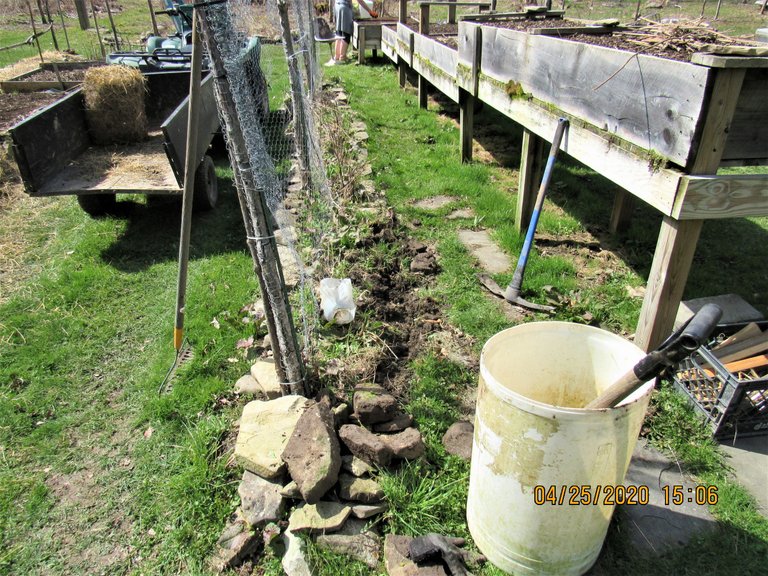
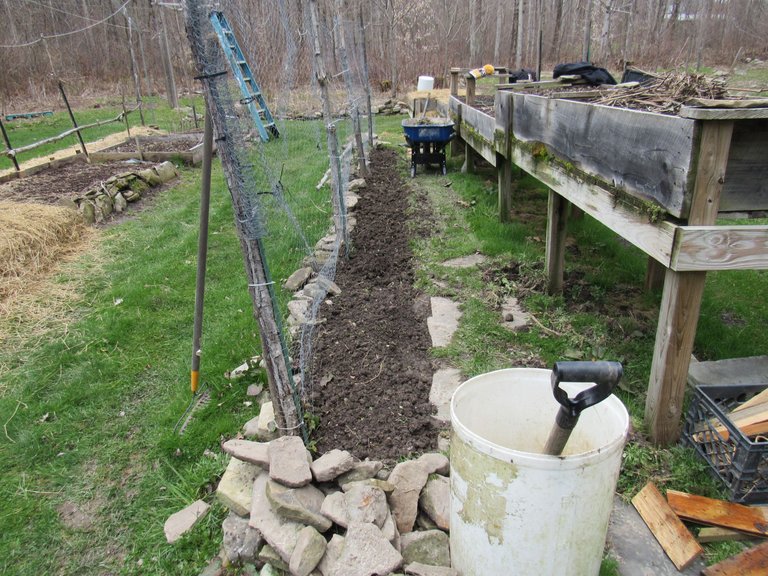
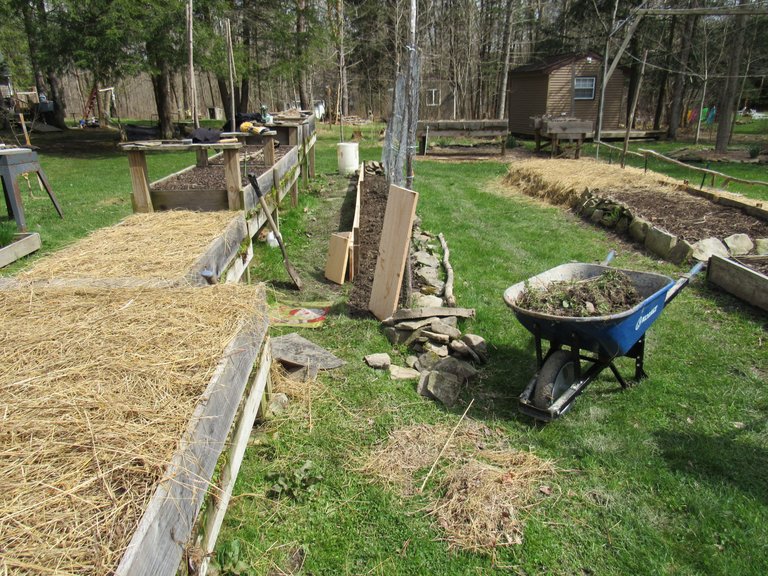

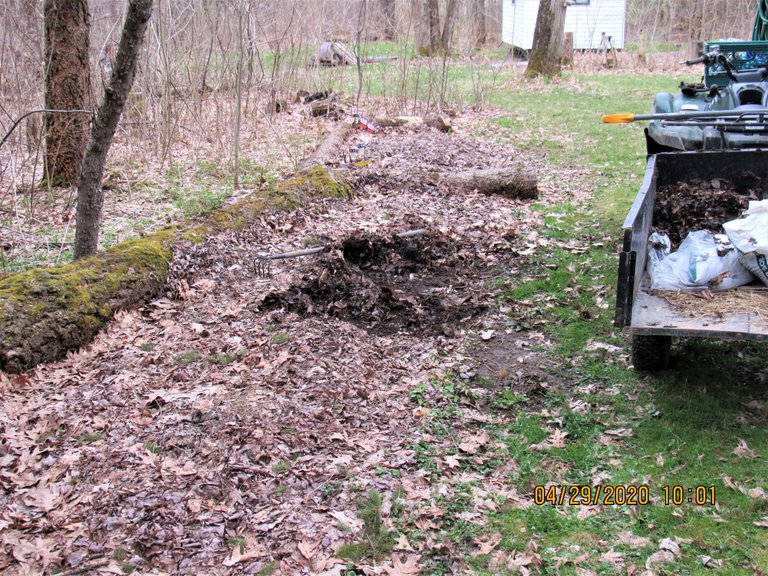
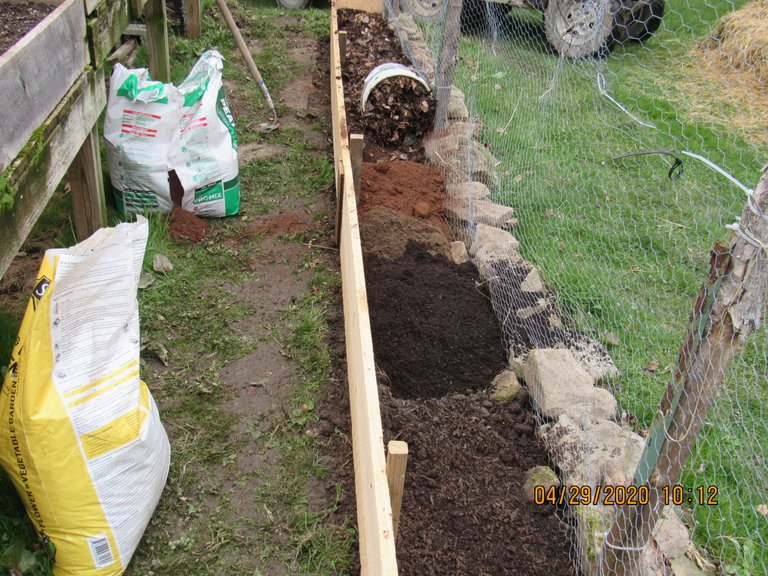
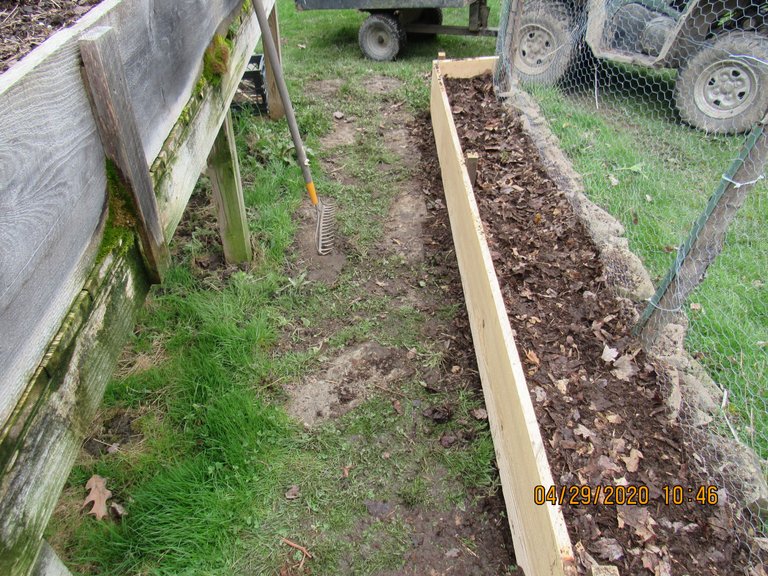

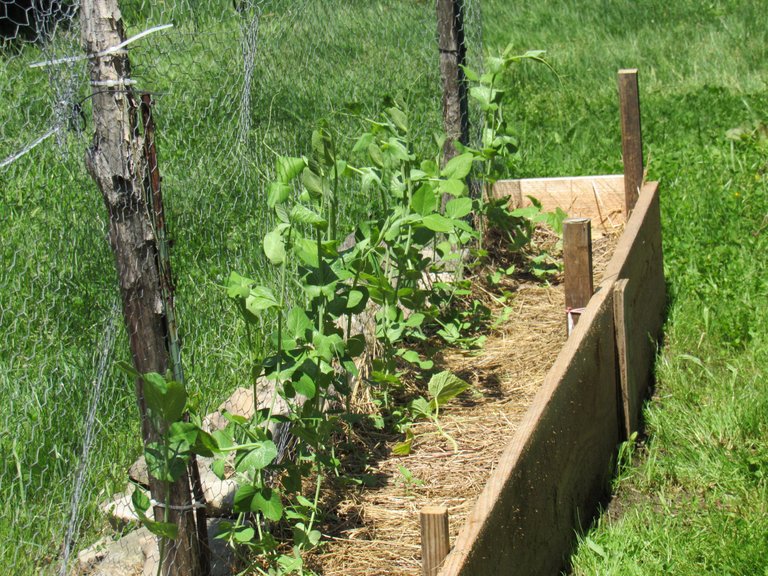
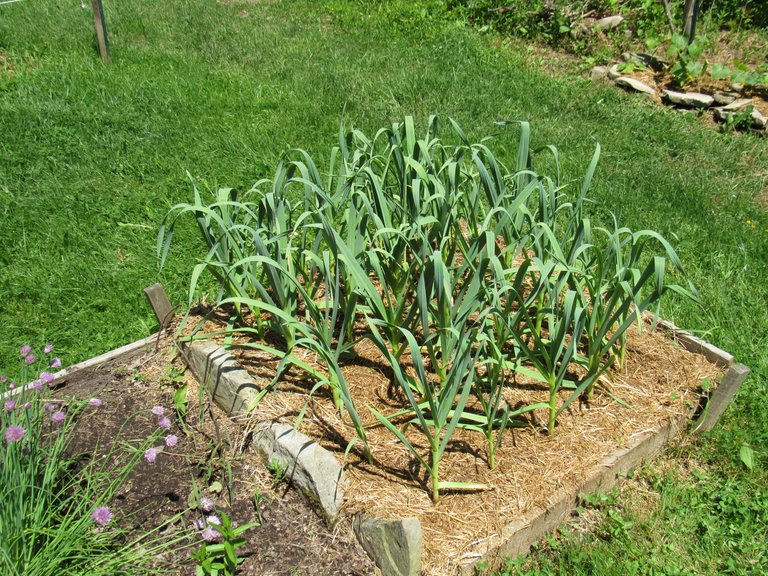
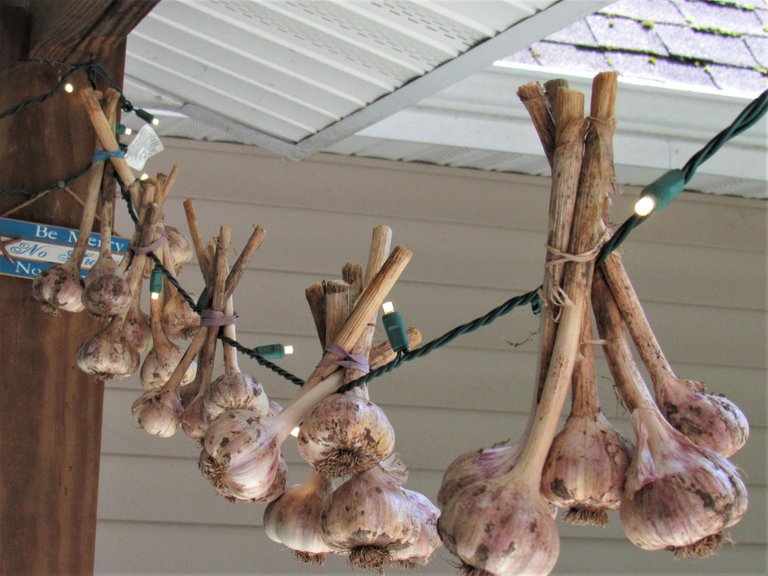
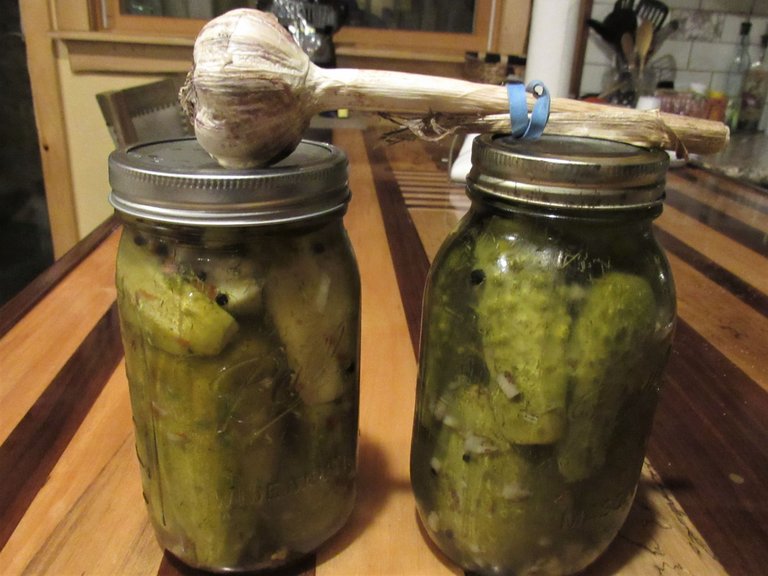
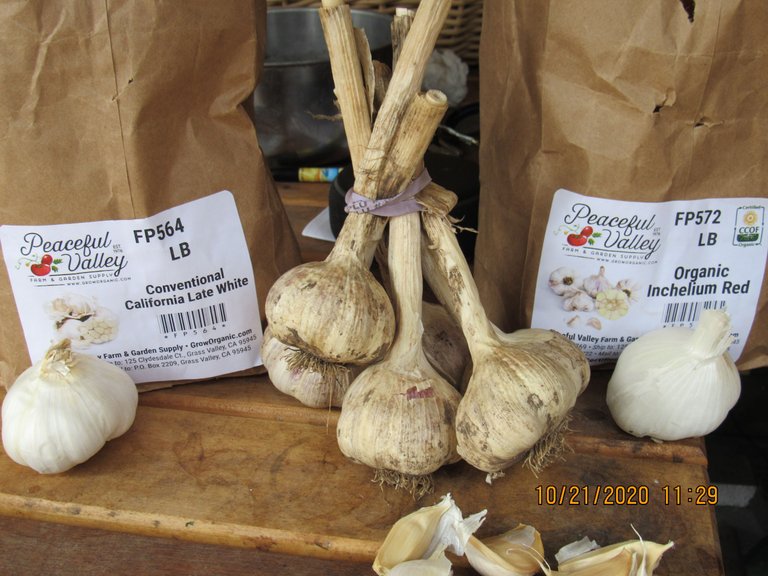
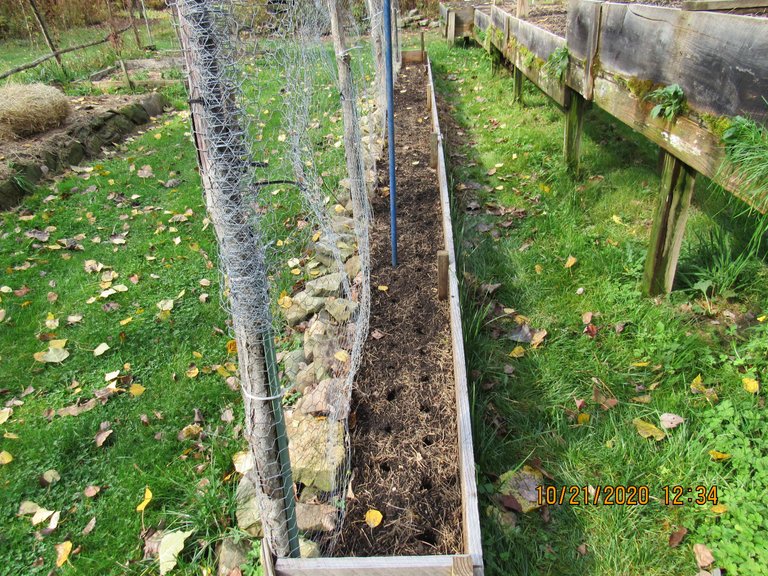

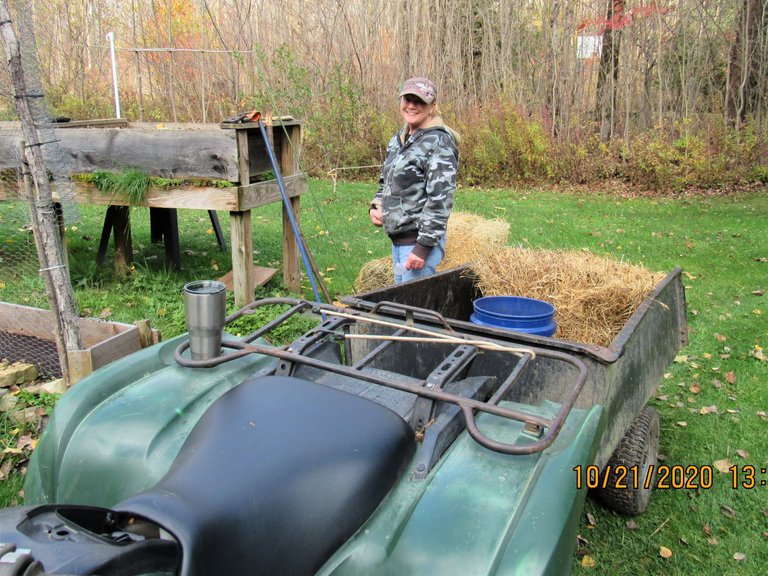
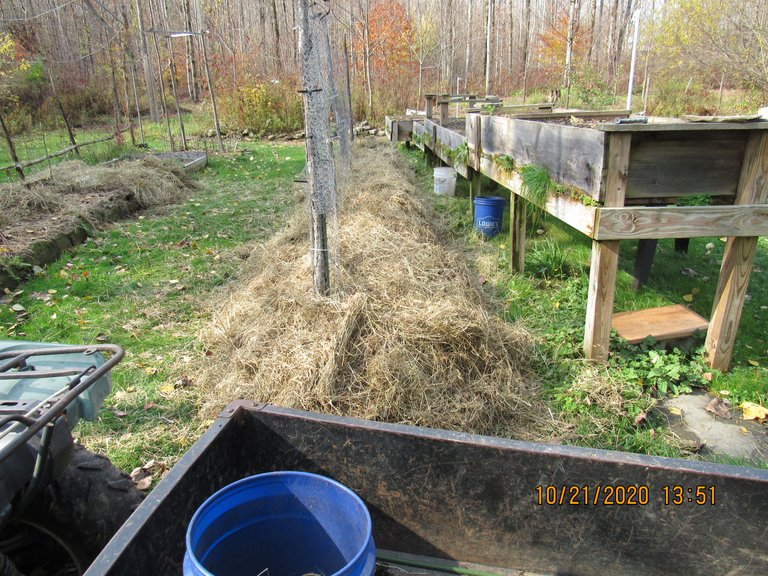
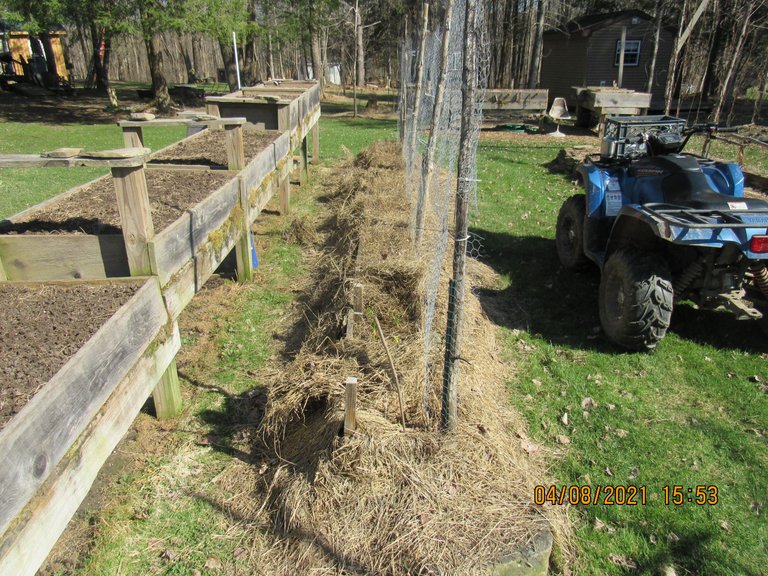
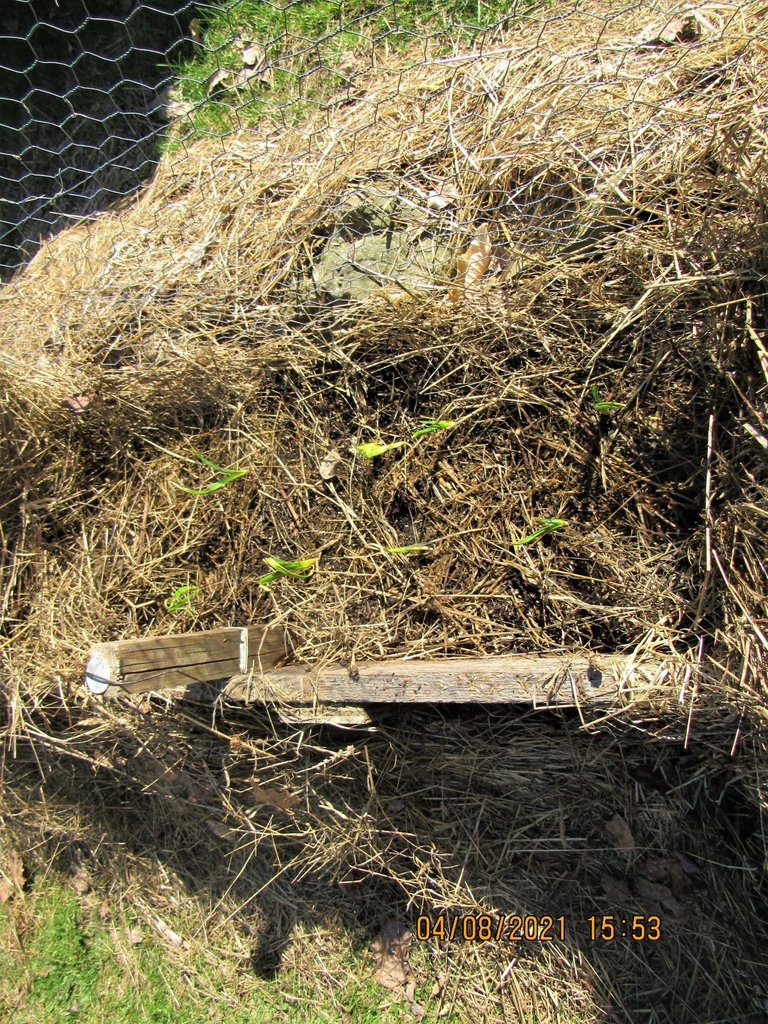
Great article!
Gardening tends not only to the body but also to the soul!
Cheers!
Your post has been voted as a part of Encouragement program. Keep up the good work!
Use Ecency daily to boost your growth on platform!
Support Ecency
Vote for Proposal
Delegate HP and earn more
Wow! This is a great post thanks for share,
Do you know about the #matrix-8 ?
We are applying a sustainable life system where we are all connected to take action!
@zhishuijing 🙌👣💫
Great post, and I learned about (apparently) the last family of vegetable, Umbellifers! I didn't see in your list... do you know if beets are in this family, or brassicas? I've always treated them as brassicas in the past.
Another tip for your back: carry a short section of 1/2" pvc pipe with you (or tape it right to your hole-poker) and you can drop your seeds down the pipe and into your hole without bending over.
Chenopodioideae/ Beet Family/Goosefoot
The common garden crops in this family are beets, Swiss chard, and spinach.
Beets make great companions for onions, garlic, leeks, lettuce, and plants in the Brassica family, like broccoli and cabbage.
Thanks for the PVC back saving tip, great idea, one that I will definitely use in the future.
Thank you for the great answer!
organic cultivation of oregano in Greece
OMG... I was just saying "Wow...Wow....Ooooh I didn't know that...Wow" like a fool during the entire post. This is fantastic, thank you so much...
I would like to borrow your mind, my growing is a untidied clusterfuck. You guys are taking farming and gardening on another level, it's so pretty and clean, the rocks are piled so nicely on the top of one another, it's like it was predesigned by an engineer.
One question:
https://images.hive.blog/0x0/https://files.peakd.com/file/peakd-hive/thebigsweed/EoyPyf5J8JGh8Cpzno6GbHMPqPFCEhRVetRc7zP6GwxghkiKD6zPmUCNCd4PWsZ97yW
Are those raised beds? It's next level shit
Thanks for such a great reply. We've been gardening for 40 years or more and big time since we both retired. We are still learning things along the way and with every little trick, things only get better.
With age comes some creaky bones and bending over is not as easy as it once was. Since we started the gardens in NY, I have been steadily building one raised bed after the next. We're almost where we want to be with just a few more raised beds to build. It sure does give the back a break.
Gardening is like most other things, it takes some time to learn and perfect.
I'm glad that this post was informative and that you may be able to put into practice some of the information.
Here's a blog on the raised bed boxes I built a year or so ago if you would like to take a look.
https://hive.blog/homesteading/@thebigsweed/transformation-complete-gardening
Have a wonderful day!
Thanks for upping your game with a great reply!
I think @cryptoandcoffee said it the best in the comment section of your post, you are a machine. This is way too much work, just the planning must have been quite something! Really inspiring @thebigsweed thank you so much for this have a great day too!
I grow a LOT of hardneck garlic as I use a lot, and I need to have enough to plant in October. Nice post on rotational gardening. :))
The hardneck garlic we plant comes from the garlic we planted the year before. We will be putting some of the softneck in storage for next year and we don't anticipate having to purchase any more in the future.
Thanks for stoping by, my friend.
Reblogging this to give to our local safety shelter, as they have veggie gardens there.
I don't know if they know all of these tricks, so let's hope that it will give them a heads up.
Thank you.
Thanks for the reblog my friend, I'm happy that you feel that this blog may provide some tips on vegetable gardening to those at the safety shelter.
I just started rotating my our crops a few years ago, and it has made a big difference in the yield we get.
Well, you have compiled an excellent document my friend and I am sure that they will benefit from it.
Haven't shared it yet, as we are running around preparing for a terror that they call "The Black Storm", as it will land here tomorrow. It arrives here every few years and at its last visit it ripped the town of Laingsberg apart and 300 people died in the floods, so we treat it with utmost respect.
I think that you know that this is called the Cape of Storms, as we are on the ultimate southern tip of the African continent and we face thousands of miles of open seas.
So yeah, we are expecting a tough time especially with all of the shanty townships around.
But prayer will carry us through.
Cheers and !BEER
View or trade
BEER.Hey @thebigsweed, here is a little bit of
BEERfrom @papilloncharity for you. Enjoy it!Learn how to earn FREE BEER each day by staking your
BEER.